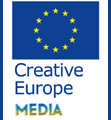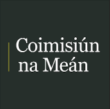With ‘Patrick’s Day’ hitting Irish cinemas on February 6th, IFTN caught up with cinematographer Michael Lavelle who has been gaining plaudits (and awards) for his work on the acclaimed film.
Garnering a Haskell Wexler Award at the Woodstock Film Festival for Best Cinematography, Lavelle’s work has also been lauded by ‘Patrick’s Day’ director Terry McMahon who said ‘it's all about what is captured in front of the lens – and we had a secret weapon called Michael Lavelle’.
A 2010 co-recipient of the Best Cinematography Award at the Sundance Film Festival for the documentary ‘His&Hers’, Lavelle talks to IFTN about his work on ‘Patrick’s Day’ and gives us an overview on what shaped him and continues to shape him as a cinematographer.
IFTN: Tell us about your work on ‘Patrick’s Day’.
Michael Lavelle:‘Patrick's Day’ was an incredible script, it had that gorgeous quality of revealing more and more depth the further we dug. Initially, Terry and I had a series of conversations interrogating the script and discussing what was at its’ heart. Terry is brilliantly rigorous and continually pushes the boundaries of expectation so that process never ended right through to the final cut. We did take a weekend away together in a great little hotel down the country to do the storyboards but we returned without any visible proof of what we had done. Thankfully our producers Tim Palmer and Rachel Lysaght showed fantastic confidence in us because what we did walk away with from that weekend was infinitely more valuable than a list of shots on a page.’
‘We developed a clear and unified understanding of what the cinematography should be doing in the film and from that we developed our first glimpses of a cogent visual language that came directly from the story. Once Terry and I had that common language we just went for it and trusted our guts. Then the challenge was to execute that vision and that was made possible because of the incredible team we had around us. Rob Flood and Joshua Bourke as focus pullers, Niall Cullinane as data wrangler, Luke Murphy Gilligan and Richie Lacey as 2nd ACs and Richie Egan as our grip. It was a really tight bunch of gifted individuals and I feel blessed to have had them. Our lighting team Dermot Coleman, Sean Cahill and Addo Gallagher are incredibly experienced and kept one step ahead of me at all times. We posted in Screenscene where Gary Curran did a beautiful job on the grade.’
‘My work was possible because of those other talented people working to that singular vision. (Oh and of course our editor Emer Reynolds who kindly cut out all the bad bits and made us look good!) The start was a little bumpy as Terry and I were determined to ensure that the process remained open and organic, so as to be able to continuously respond to the moment. That sort of energy can feel a little chaotic at first but once Moe, Catherine, Kerry, Phillip and the rest of the cast started delivering gold-dust everyone on set had the sense that we were capturing something really incredible. I think that energy is crucial to creating that intangible sense of 'aliveness' you can get in cinema. You have to know what you want to do, then just trust the process and embrace the chaos.’
What training/education did you receive to become a cinematographer?
‘I think you train to be a cinematographer by loving beauty so you train from a very young age. My mum bought my dad a Super-8 camera when I was six. He gave me a three minute roll of film once every few months and I began making short films. I edited in camera. They were mostly nature documentaries with my toy animals and stop motion recreations of Star Wars with small live action elements in which I acted. They're quite funny to look back on now. I studied Film at the National Film School in Dun Laoghaire. The year I graduated, I shot a short film with Ken Wardrop called ‘Undressing My Mother’. That film did very well critically and at festivals so I started picking up film work on the back of that. My training has largely been from working with brilliant directors who trust me as I continue to explore visually. Because every movie is so different, I guess I still feel like I'm training.’
What was your first job in the industry?
‘My first paid job in the industry was shooting a documentary in Italy with Kate McCullough. We shot it over three weeks in Tuscany and got paid peanuts. It was a fantastic experience and a joy to share it with Kate who is a good friend and close collaborator.’
What do you enjoy most about being a cinematographer? And what do you consider the greatest challenges?
‘I really enjoy the process of collaborating with the director and the rest of the team. Film making is such a tricky process and every script is unique so it's always a joy to find the unique perspective demanded by the film. Then I love the creative energy on set when everyone is tuned to the same frequency and magic is just happening and you're somehow catching it. The biggest challenge in cinematography is not deciding what you can do but being very clear in what you cannot do. I love those restrictions and working within them. Films like ‘His & Hers’, ‘From The Dark’ and ‘Patrick's Day’ all work within a tight framework of self-imposed restrictions. They help create an organic style that is a direct function of the story. The interesting part is to find how to make the film within that little tiny box that you allow yourself. In practical terms, the challenge then becomes how do we accomplish this vision technically and within the tight timeframe of the shoot. It's the challenges that keep it interesting.’
Describe your typical working day and the equipment you use.
‘Well my typical working day varies dramatically. When I'm shooting a feature and if call time is not too early I'll try to squeeze in a little yoga before going to set. It helps keep the body supple and the mind clear. I like to get on set early if possible before the other crew members to just walk through the space and get my thoughts in order before everyone arrives. Sometimes I'll play a little with some ideas I have and run them past the director. I prefer shooting on location as every space has an energy and I think part of my responsibility is to feel the energy of that space and somehow make sure that energy is part of the film and communicated to the viewer through the lens. As far as equipment goes, I trained on film but now most work is on digital. ‘Patrick's Day’ was shot on ARRI Alexa supplied by Volker and the uber dedicated team at Vast Valley. Our plan was to travel light and shoot fast. We had 4k/2k HMI (with swappable bulbs) and 1.5k HMI, some 4X4 Kinoflos, blondes, redheads. Very simple. All our lights were supplied by Jason and the rock solid reliable team at Teach Solas.’
What filmmaker/DOP has influenced you?
‘I have a list of filmmakers who inspired me that's the length of my arm. I have to go to my origins - it was films like ‘Star Wars’ by George Lucas, ’The Empire Strikes Back’ by Irvin Kershner, ‘Jaws’ by Speilberg and ‘Psycho’ by Hitchcock that made me want to make films. Later, it was influential works like ‘Wild Strawberries’ by Ingmar Bergman, ‘Mirror’ by Tarkovsky, ‘Paris Texas’ by Wim Wenders, ‘Reservoir Dogs’ by Quentin Tarantino, ‘Festen’ by Thomas Vinerberg, ‘Breaking the Waves’ by Lars Von Trier and ‘Dogtooth’ by Yorgos Lanthimos that would have all been inspirational.’
‘As far as cinematographers go - I remember being blown away by Robbie Ryan's work when I was in college. He had left college at that stage but his work is unique and his maverick sensibility really opened my eyes to the mesmeric possibilities of not playing by the rules. Chris Doyle is also a spectacular talent. And Anthony Dodd Mantle is sublime.’
What Irish film or TV show would you have loved to have worked on?
‘The Crying Game' by Neil Jordan and ‘My Left Foot’ by Jim Sheridan were the two films that made me believe you don't have to be an American living in Hollywood to make utterly spellbinding movies. Either of those inspirational masterpieces. And ‘Hunger’.
What films and TV shows did you enjoy growing up that may have encouraged you to work in the industry?
‘My best friend in primary school was an American boy who had all these incredible ‘Star Wars’ toys. Although I'd never seen the film I became obsessed and each day I would ask him to describe it to me over and over. He must have described that film to me every day for two years! I saw ‘Superman’ and ‘Jaws’ when I was about six and then ‘Empire Strikes Back’ after that. Then finally one Christmas I saw ‘Star Wars’. I used to have a red bicycle and I had a red raincoat which I tied around my neck trying to be ‘Superman’ and I got my mum to sew me a poncho like Luke wore in the Mos Eisley scene. So yeah, it was those incredible worlds created in those movies that made me dream. And thanks to them I'm still dreaming.’
What’s the difference between working on an Irish production and working on an international production for you?
‘Well I worked for MTV in Bollywood for a year and that was my most dramatic international experience. I had 40 guys in my camera department some days and everyone would show up late and then stay late. It was a cultural thing but it was tricky to adapt to that. But I find that in general film is a universal language. We may have different dialects but once you have a room full of people believing in a project it's amazing how you can all find a fluidity.’
What advice would you give to anyone wishing to get into cinematography?
‘Take photos, look with your heart. Shoot, shoot, shoot. Read the script. Talk about the script. Think about the script. Then go deeper. Really interrogate the script. Once you have a handle on what you're doing. Be brave. Make the brave choice. Do your homework, then trust your gut. Smile. Have fun. It's a game after all, so never stop playing.Oh and take it easy but take it.’
‘Patrick’s Day’ will be released on February 6th with an opening night screening planned at the IFI.
Check out Paul Byrne’s interviews with:









